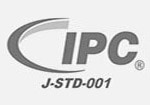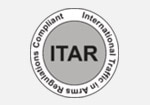 Businesses need reliable connectivity to facilitate interactions with customers, partners, and suppliers, as well as to communicate with internal stakeholders. Ethernet cables enable businesses to communicate by uploading, downloading, and transferring data in milliseconds. With ethernet cables of varying quality saturating the market, it’s important to source high-quality products that can deliver robust data transfer capabilities.
Businesses need reliable connectivity to facilitate interactions with customers, partners, and suppliers, as well as to communicate with internal stakeholders. Ethernet cables enable businesses to communicate by uploading, downloading, and transferring data in milliseconds. With ethernet cables of varying quality saturating the market, it’s important to source high-quality products that can deliver robust data transfer capabilities.
In this guide, we’ll explore how ethernet cable assemblies have evolved over time, different types of ethernet cable assemblies, and how Electro-Prep can help businesses find solutions.
What are Ethernet Cable Assemblies?
Ethernet cables can transfer data by forming a wired connection. The multiple layers of an ethernet cable include:
- The core, which consists of multiple pairs of twisted wires
- A layer of metal shielding that protects against interference.
- An insulating jacket that protects the wires and shielding from environmental factors such as impacts and moisture
As ethernet cable assemblies become more complex, they may include more wires, different port connectors, and different types of jackets and shielding.
Ethernet cables are the foundation of computer communication systems and networks in any residential, commercial, or industrial setting. Larger networks often have a variety of interconnected ethernet cable assemblies that transfer data between points. Over time, ethernet cables have become more specialized. Cables exist for different types of hardware and can also be customized to fit the needs of different sectors. They come in a wide range of colors, materials, sizes, lengths, and complexities.
Specialty ethernet cable assemblies are used in the following industries:
- Aerospace
- Automotive
- Commercial spaces
- Communications
- Industrial sectors
- Medical sectors
- Military
Ethernet cables facing different environments often have different performance requirements. This may call for specialized jackets and shielding that can handle unique environmental hazards, such as:
- Physical damage, including abrasion, crushing, and flexing
- Weather factors, including high and low temperatures, humidity, and UV light
- Exposure to potential contaminants, including chemicals, dust, and oil
- Interference, including electromagnetic radiation (EMI) and radio frequency interference (RFI)
Different Categories of Ethernet Cables
 There are numerous types of ethernet cables available on the market, organized into categories, or “CATs”. Each “CAT”, from lower to higher numbers, consists of ethernet cable assemblies with increasing capabilities. When older standards are modified, improved, or replaced, a new CAT is formed and the standards of ethernet cable design, construction, and/or capability evolve.
There are numerous types of ethernet cables available on the market, organized into categories, or “CATs”. Each “CAT”, from lower to higher numbers, consists of ethernet cable assemblies with increasing capabilities. When older standards are modified, improved, or replaced, a new CAT is formed and the standards of ethernet cable design, construction, and/or capability evolve.
The different categories of ethernet cable assemblies in use today include:
- CAT 5. This is one of the oldest categories of ethernet cable still available. CAT 5 can handle speeds up to 100 Mbps.
- CAT 5E. CAT 5E is an updated subclass of CAT5. These cables fall under the same standards as CAT 5 but can handle Gigabit applications and have more stringent specifications regarding crosstalk and interference.
- CAT 6. CAT 6 can broadly support Gigabit networks with bandwidths up to 250 MHz and speeds of 1 gigabit per second (Gbps). CAT 6 has become common for residential applications, since these ethernet cable assemblies can handle higher speeds and data requirements. These cables have more rigid shielding, which reduces interference but also makes the cables stiffer.
- CAT 6A. CAT 6A cables accommodate speeds of 10Gbps, even over long distances.
- CAT 7. CAT 7 cables enable 100 Gbps speeds for no longer than 15 meters. These cables are backward compatible with RJ45 ethernet ports and work with GigaGate45 connectors.
- CAT 8. CAT 8 cables can have speeds of 40Gbps and handle 2000 MHz bandwidths. These cables are designed for highly demanding environments, such as data centers.
Why Partner With Electro-Prep?
Electro-Prep is a trusted manufacturer and supplier of CAT 5E, CAT 6, CAT 6A, CAT 7, and CAT 8 ethernet cable assemblies. We build our cables to meet the needs of a diverse range of clients. Our capabilities include cable manufacturing at custom lengths, labeling services, and customized assembly.
Ethernet cables are essential tools for enabling fast, reliable data transfer for personal homes, businesses, and industrial facilities. Contact us today or request a quote to see how our high-quality ethernet cable assemblies can improve speed and connectivity in your application.





